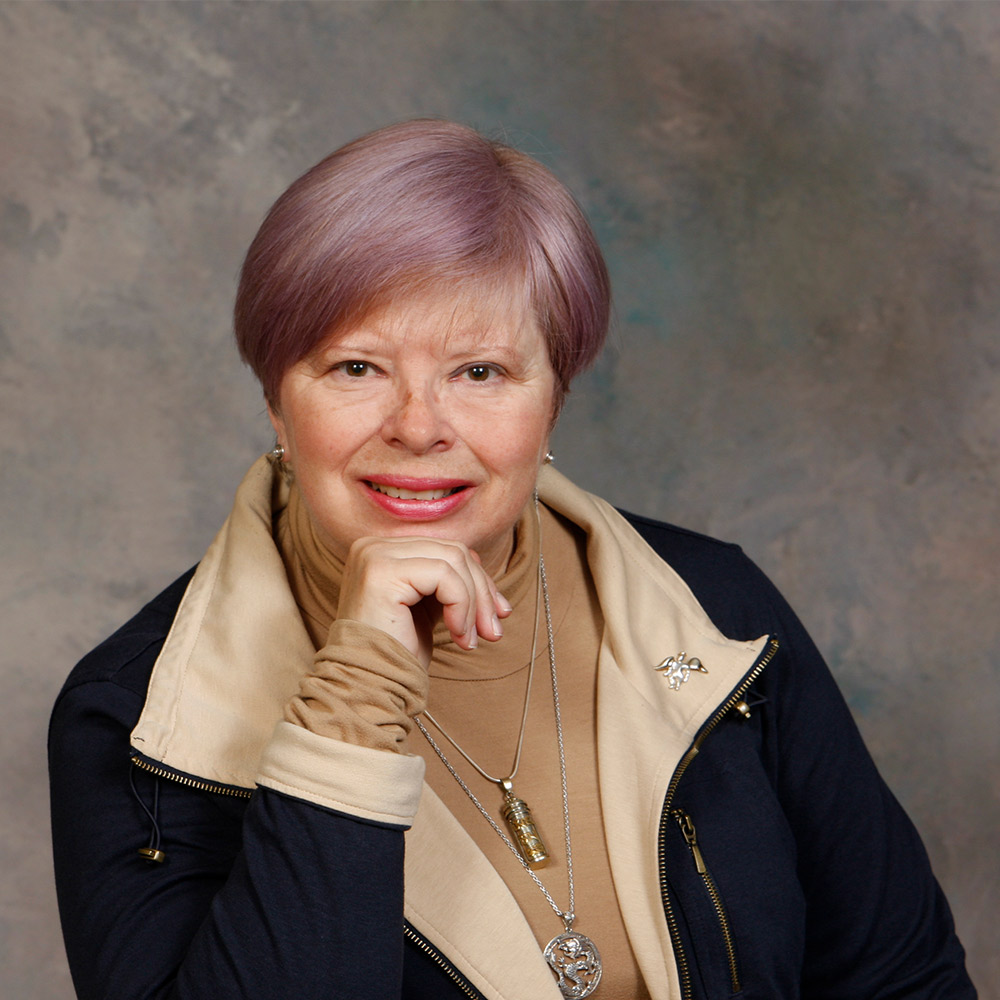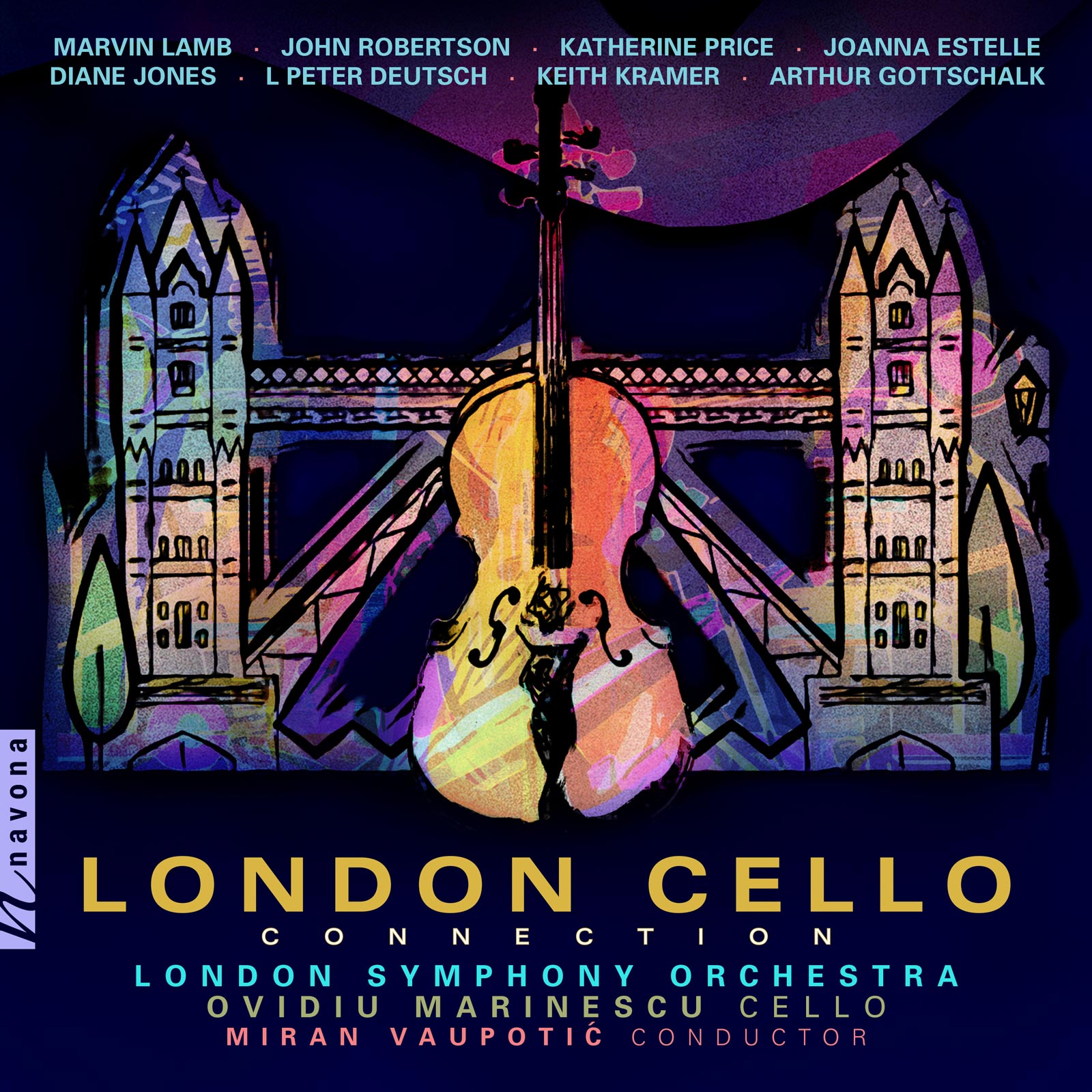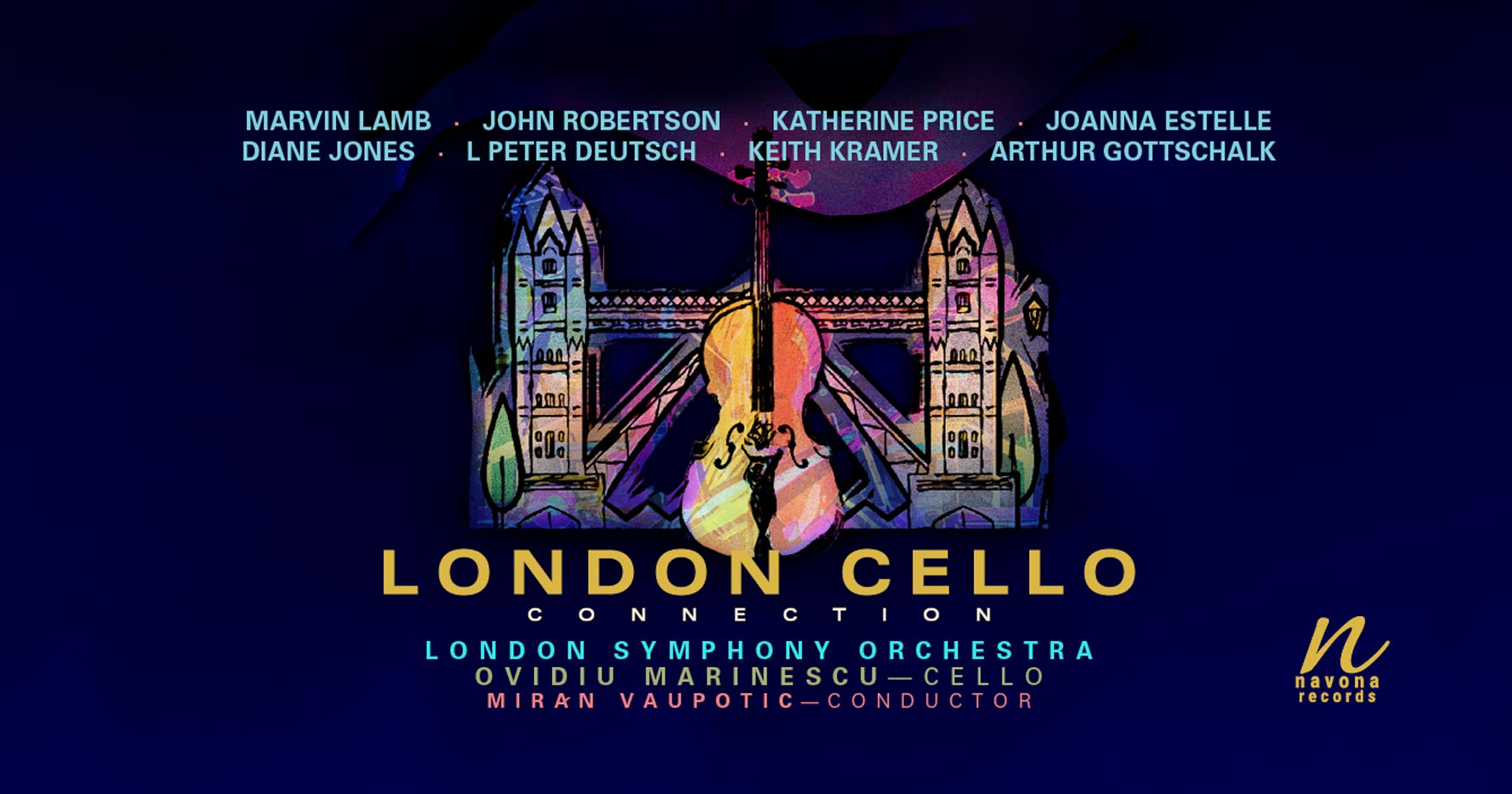
Eight exceptional composers, eight premiere recordings with a legendary orchestra, and one spectacular soloist: LONDON CELLO CONNECTION is a captivating compendium of contemporary compositions by celebrated cellist Ovidiu Marinescu and the London Symphony Orchestra with conductor Miran Vaupotić.
Marinescu’s emotive, lush sound and superb technical command provides the continuous thread throughout the program, from the elegant Sarabande by Marvin Lamb to Arthur Gottschalk’s regal Brunetti Meditations to the shimmering, pulsing Soul Dance of Diane Jones, connecting and contrasting each of these works and others by John Robertson, Katherine Price, Joanna Estelle, L Peter Deutsch, and Keith Kramer.
“We envisioned a unique album, defined by a cohesive artistic inspiration,” says Marinescu. “Each composer reinterpreted the concept of dance to line up with their individual artistic ethos, and the resulting works vary from lyrical expressive, to virtuosic pieces, to works of coloristic effects. You could feel that an ‘all-stars’ team was assembled.”
PARMA Content Writer Shane Jozitis recently connected with the composers of LONDON CELLO CONNECTION to learn more about the inspirations, processes, and realizations behind their works. Read on for an exclusive deep dive into the creative minds behind this Navona Records release.
SJ: Typically a common and supportive instrument in orchestral settings, the cello finds itself in the spotlight here. What techniques did you employ to bring the celebrated instrument front and center?
KK: I sought to integrate the timbre of the cello into the orchestra, where the dichotomy melds together as one. My focus was on shifting tone color throughout.
JR: Even as solo instruments, cellos can be surprisingly covered so I was very careful with the orchestration of the piece to be sure this didn’t happen. I wanted to use the full instrumental complement available so the full brass rings out while the cello is resting to offer a contrast in the sound picture. And for quite a large instrument the cello is very nimble so I made sure that aspect of its character resonated.
SJ: What did your personal journey look like in writing your piece? Did this setting lead to any new discoveries as a composer, or solidify any known truths?
LPD: I started out with a lot of anxiety, because The Forest Stream is my first work for a full orchestra; that anxiety took a while to dissipate even after I was finished. What I discovered was that by consciously following the traditional simple division of instruments into foreground, midground, and background, I was able to produce a result I enjoyed without tying myself in knots in the process.
JR: Although Maestro Marinescu suggested only a couple of changes, they were important: one involved left hand pizzicato which — while possible — would be awkward for the player to produce and the effect wouldn’t be worth the effort. Lesson learned: just because you can isn’t a good enough reason for doing something.
SJ: The themes of these works are multifarious, ranging from the highly personal to the most universal. Where does your piece fall on this spectrum, and what message do you hope to convey?
JE: The theme of this piece is the search for a feeling of home in this world. And although universal, it evolved out of a very personal story. My late grandfather, Michael Sharik, was a Ukrainian poet, author, and political activist who fought the Bolsheviks 100 years ago, then fled to Canada as a refugee in the 1920s. He spent his entire life working for a Ukraine free of Russian domination. Given the current situation in Ukraine, I am rededicating my piece to all those who have been displaced by war, both there and around the world. To me, the cello can truly sing and express human emotion in a very touching manner that evokes a response similar to a vocal performance. By setting the cello voice against the accompanying orchestral arrangement, I hoped to retain the essential nature of this piece as a song.
LPD: The music I find most satisfying, and I hope most effective, to write is that which combines personal and universal aspects. While The Forest Stream was inspired by my very personal memories of vacationing in the woods in New Hampshire and hiking in the mountains around Lake Tahoe, I’m hoping that it will bring up similar personal images for listeners, since I like to think that appreciating the beauties of nature is a universal and uplifting experience. The Forest Stream has a bit of the character of an opera, the cello being the narrator. Of course, that’s just how I think of it: listeners may have quite different associations.
ML: My piece is a meditation on a particular Sarabande, the Sarabande from the French Suite No. 1 in D minor BWV 812 by J.S. Bach. The harmony with its rich sense of chromaticism within a traditional tonal setting is something I admire very much and wished to exploit in the piece. And, weirdly to me, it achieves its goal through the various “like minded” colors it suggests in that chromaticism. I worked the orchestration so that each iteration of the theme was played by a corresponding “like colored” instrument.
KK: Personally, I wish that the music be the message in of itself, reflecting on nature and our integral connection with the intuitive. I am not interested in supporting political/ideological movements that convey specific messages. It is my hope that I can connect with the listener in a way that is unencumbered with media dogma. My interest in timbre helps me to explore the sonic possibilities within the orchestra while expressing a nearly absolute music that has a bare minimum of programmatic implications.
JR: The cello is a gorgeously lyrical instrument and very suited to long slow lines, so thinking that other pieces on the recording would likely feature this aspect I decided on an upbeat approach. Having just completed a successful course of chemotherapy for lymphoma, I felt this was personally a good idea and with a player of Maestro Marinescu’s caliber I could indulge in some fireworks in the solo part. Of course I wanted lyricism as well but the overall impression, I hope, is of forward motion.
SJ: How do you focus your compositional mind into the hands of the players during the writing process?
LPD: Before The Forest Stream, all of my instrumental music was for small chamber ensembles, which I often approach like a chamber chorus. Building on this, to some extent I think of The Forest Stream as a series of episodes for shifting chamber groups of winds, brasses, and harp in concert with the cello, with the strings used only as background. While I don’t think this is a common approach to orchestral writing, and I’m aware that it doesn’t really take advantage of the LSO’s superb string section, it worked well for me.
KK: I understood the limitations of what the orchestra could achieve with no rehearsals and a short window of recording time allotted to my piece, so I was rather conservative with my handling of the instruments. Like many composers, I have my own performance background that may help inform my writing, but I certainly don’t limit my writing to match my abilities. I am first and foremost a composer, and I prefer to work (closely if possible) with the performers who will play the work, which is a continual learning experience for me as a composer.
JR: As a wind player I find that writing for players who don’t have to worry about breathing is wonderful! I knew I could give the soloist long passages of 16th notes without fear of him collapsing from oxygen depletion, the same with extended songful phrases. Getting myself into the head of a string player technically is a different matter and I thought constantly of where the open strings were, not just for multiple stops and harmonics, but for leaps across strings and even in passagework.
SJ: Well said, everyone. Thank you for joining this roundtable discussion on LONDON CELLO CONNECTION!
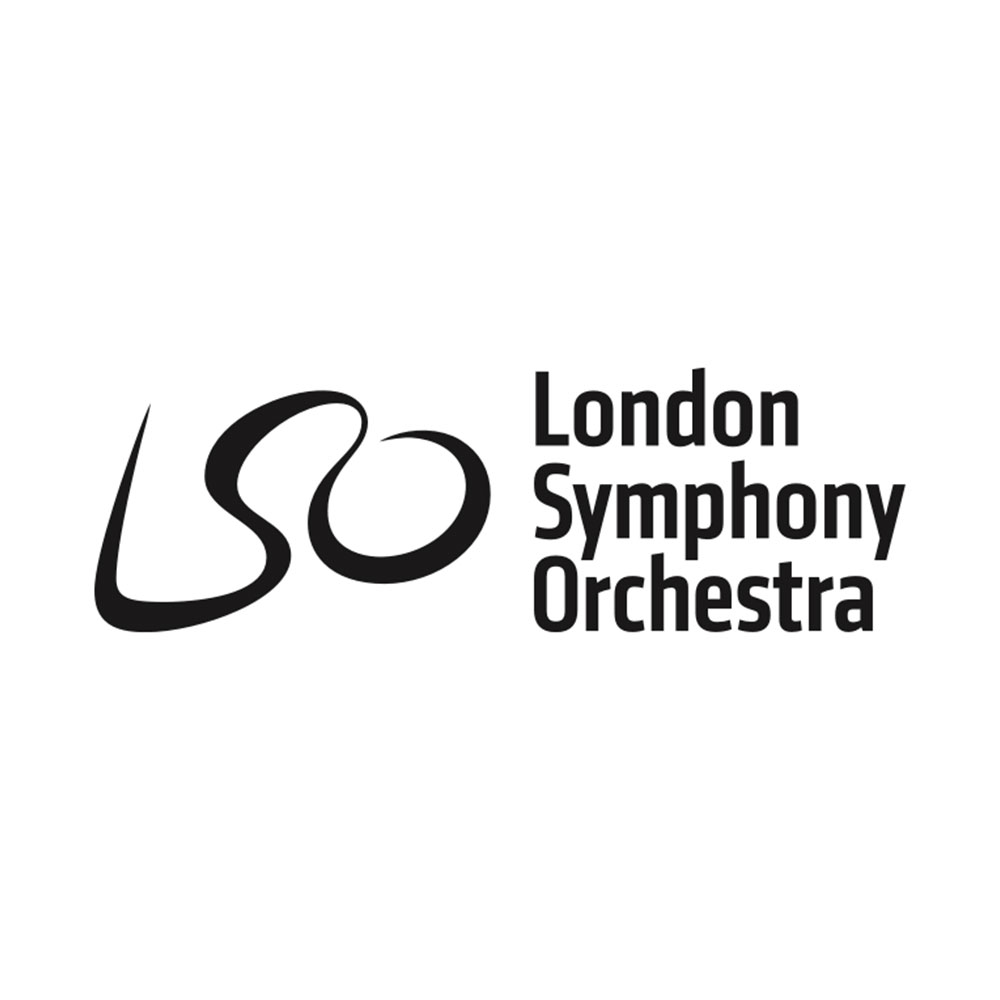
Widely acclaimed by audiences and critics alike, The London Symphony Orchestra was named by Gramophone as one of the top five orchestras in the world. A world-leader in recording music for film, television, and events, it was the official orchestra of the London 2012 Olympic and Paralympic Games ceremonies, memorably performing Chariots of Fire on stage in the opening ceremony, conducted by Simon Rattle and with Rowan Atkinson.
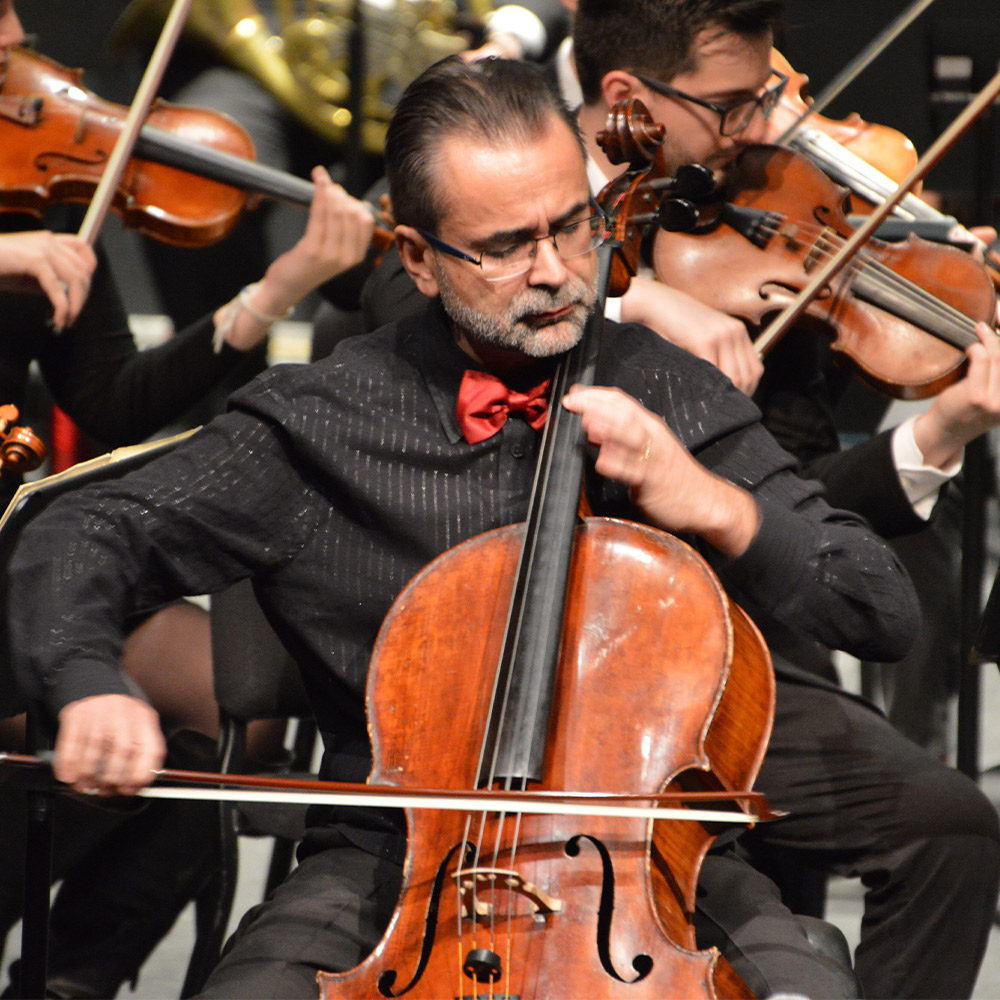
Ovidiu Marinescu, a native of Romania, is active as a cellist, conductor, composer, and educator. He has performed at Carnegie Hall, Merkin Hall, the Great Hall of the Moscow Conservatory, Rachmaninov Hall, Holywell Room in Oxford, Oriental Art Center in Shanghai, and many other venues around the world. He has appeared as a soloist with the New York Chamber Symphony, the National Radio Orchestra of Romania, Moscow Chamber Orchestra, Helena and Newark Symphonies, Southeastern Pennsylvania Symphony Orchestra, the Cleveland Philharmonic, Limeira Symphony in Brazil, Orquesta de Extremadura in Spain, and most orchestras in Romania.
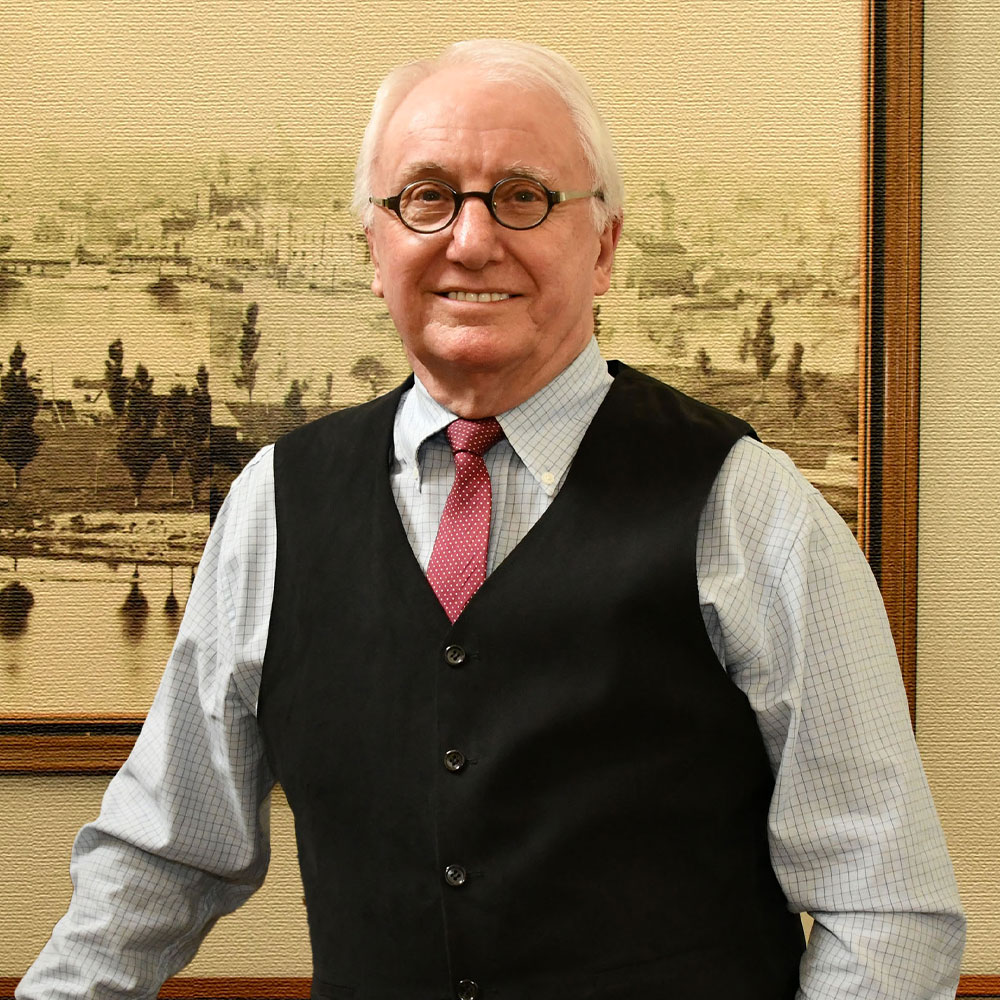
(Ernest) John Robertson (b. 1943) was born in New Zealand but is a longtime resident of Canada. His secondary school offered music as a full time subject, allowing Robertson to find his footing. Upon leaving school, he went into the insurance business where he spent his working life. Having emigrated to Canada in 1967, he continued to compose on the side.
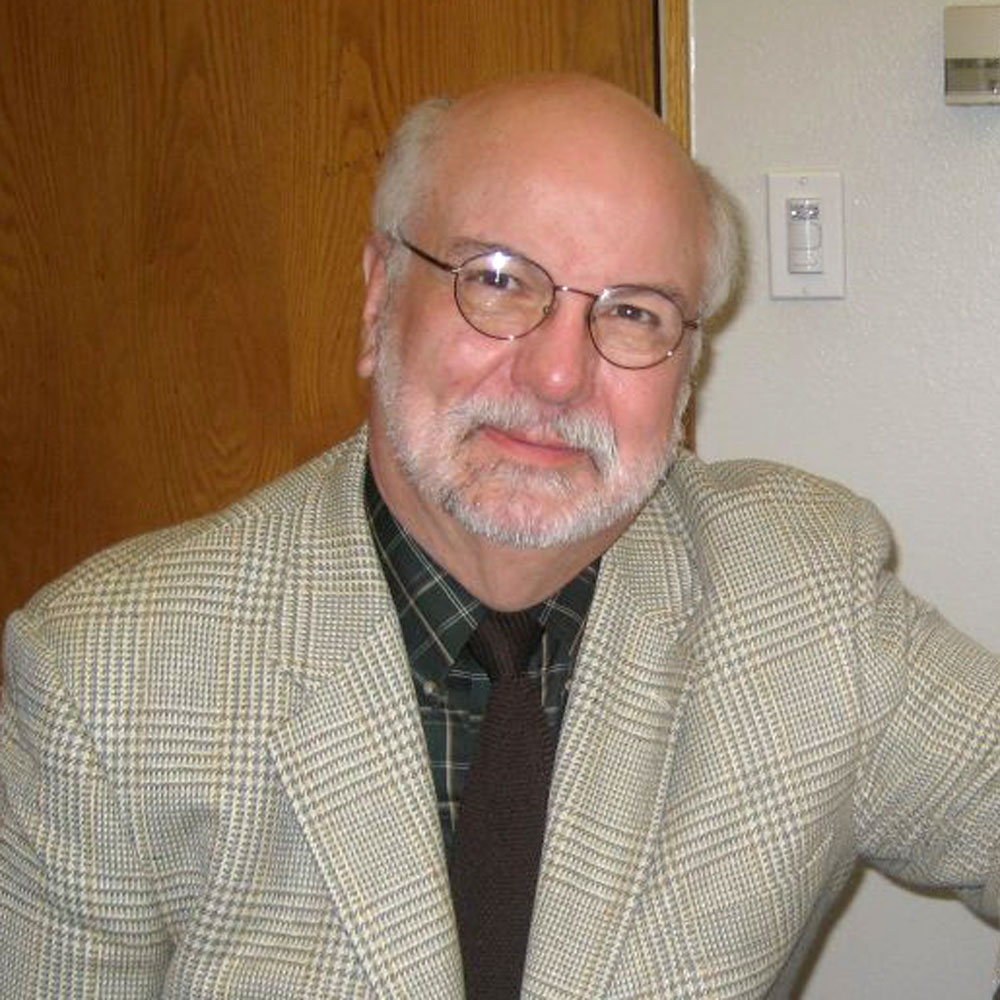
Marvin Lamb (b. 1946) is Professor of Music & Head of the Music Composition Program at the University of Oklahoma, where he served as Dean of the Weitzenhoffer Family College of Fine Arts from 1998-2005. His music has been performed widely in the United States, Europe, Canada, Mexico, South America & Japan. In addition, his orchestral works have been performed by the symphonies of Atlanta, Dallas, Colorado, Nashville, Syracuse, the Cabrillo Festival, featured on chamber music series sponsored by the St Louis & Honolulu symphonies & recorded by the Czech Philharmonic Symphony.
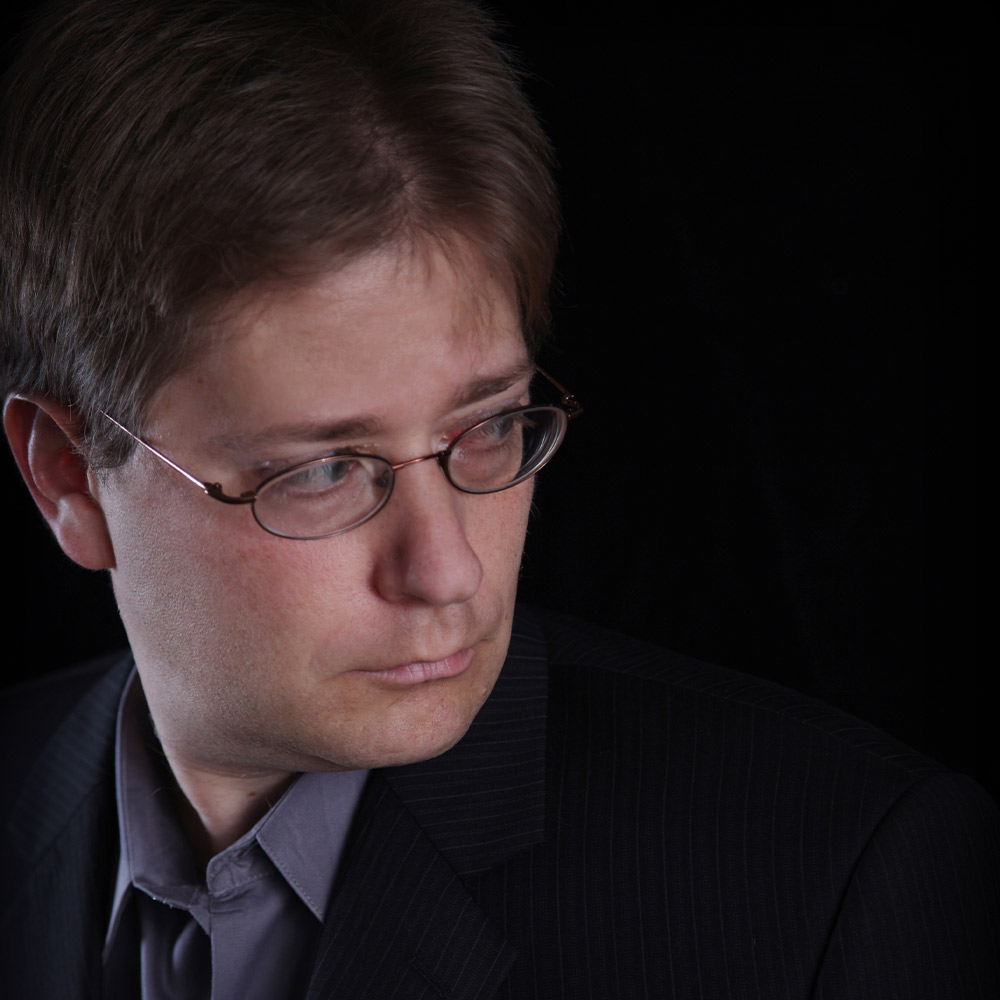
Keith Kramer is a composer of over 40 works for orchestra, chamber ensembles, solo instruments and electronic media. Keith Kramer's music is at times subtle and restrained, and other times ferocious and demanding. Always searching for new modes of expression, each piece that Keith composes represents another facet of a continuous journey of discovery. Keith’s music has also been performed and recorded by the Slovak National Symphony Orchestra, the Moravian Philharmonic Orchestra, David Taylor, Leonard Garrison and many others.
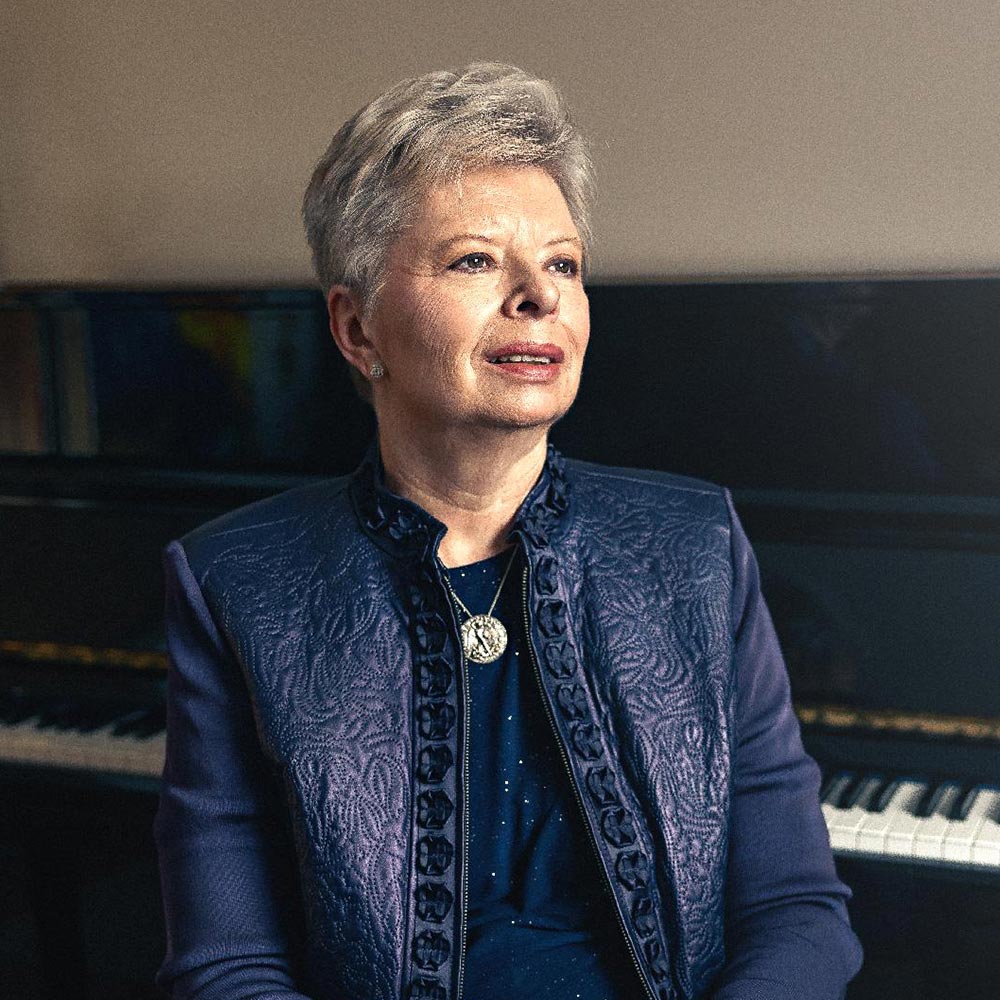
Joanna Estelle (Storoschuk) is a Canadian composer, lyricist, and arranger, born of Ukrainian parentage. Her music has won critical acclaim from Parliament Hill, Ottawa (Canada) to London (United Kingdom), Barcelona (Spain), Carnegie Hall (New York City), and elsewhere around the world. Estelle studied classical piano and theory with the Royal Conservatory of Music (Toronto) as a young person, but her parents deterred her from pursuing music as a career. Instead, she graduated in Psychology and English (Brock, 1972), then went on to study management accounting. However, her enthusiasm for music never waned.
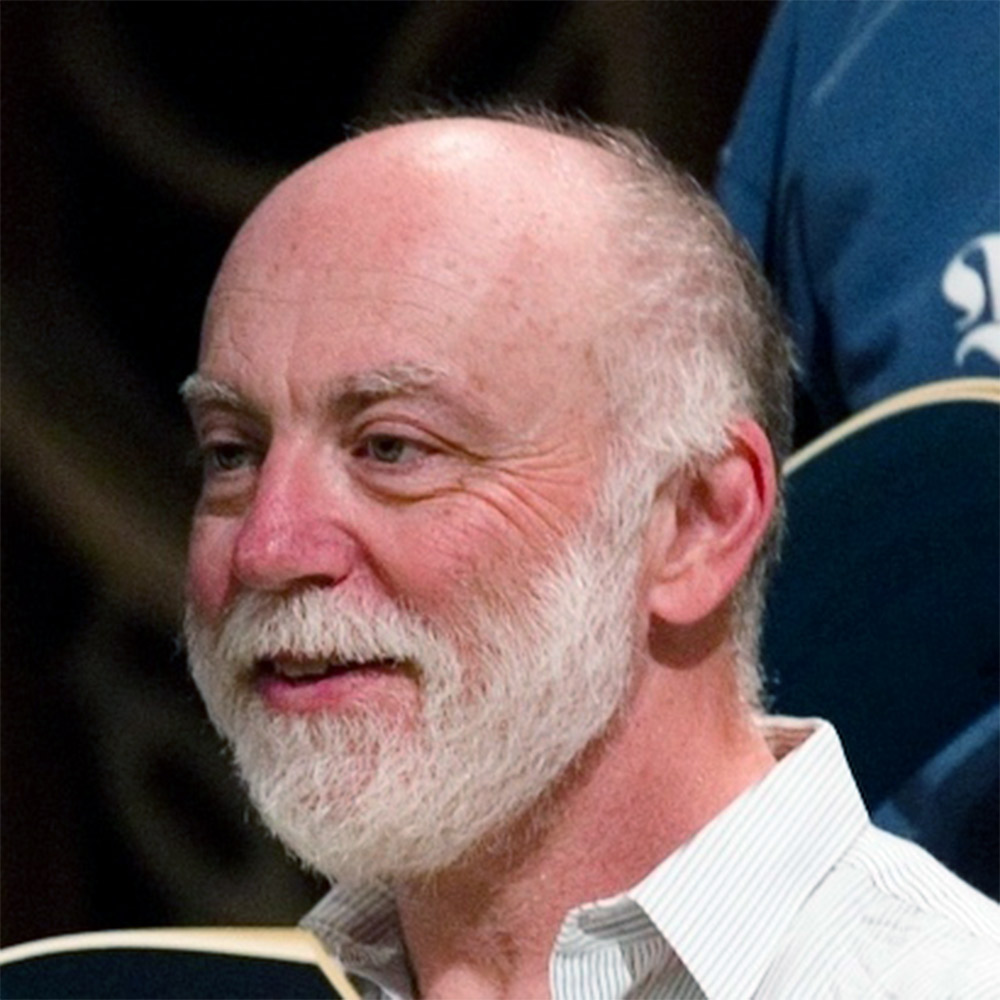
L Peter Deutsch is a native of Massachusetts, now living in Sonoma County CA, and British Columbia, Canada. He writes primarily for small instrumental or a capella vocal ensembles, spanning styles from devotional to romantic to jazzy, and from Renaissance to early 20th century. Works to date include four choral commissions; releases through PARMA Recordings include music for chorus, string quartet, woodwind and brass quintets, piano trio (featuring work with Trio Casals), and full orchestra.



